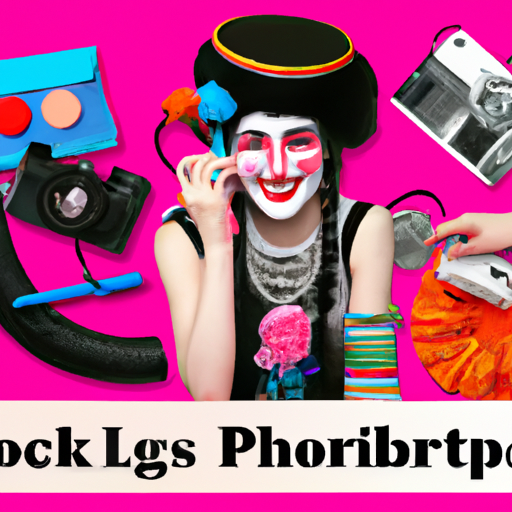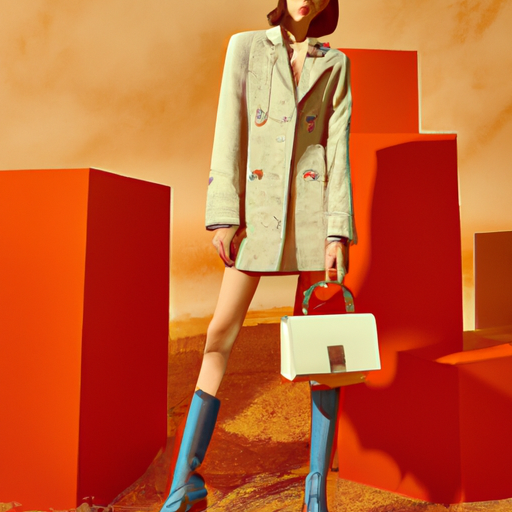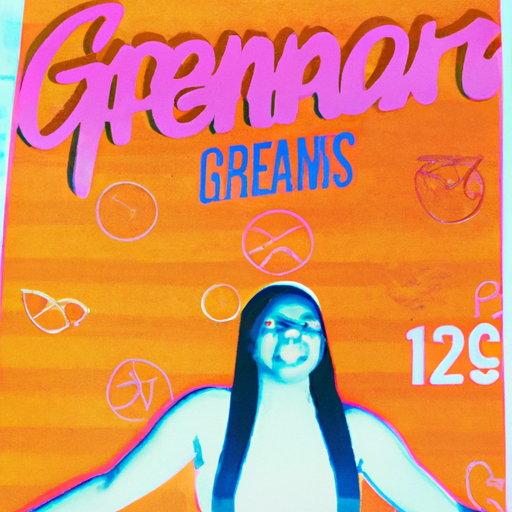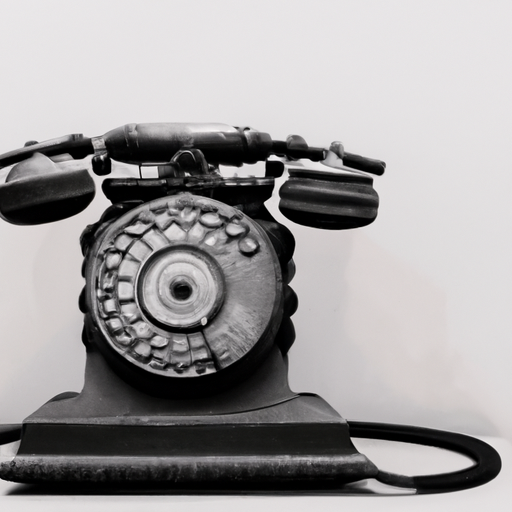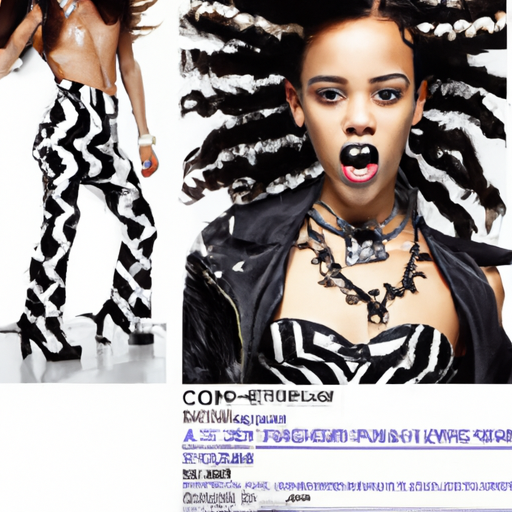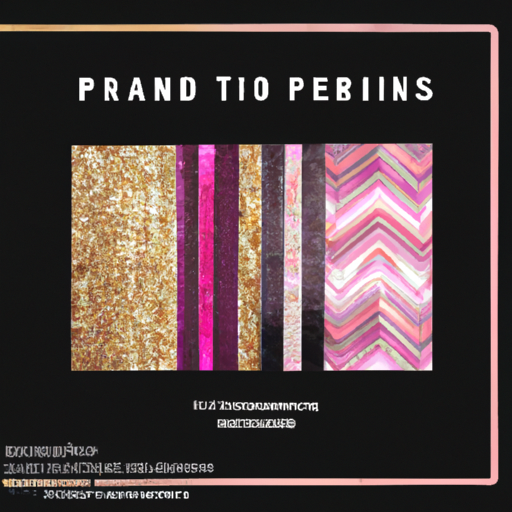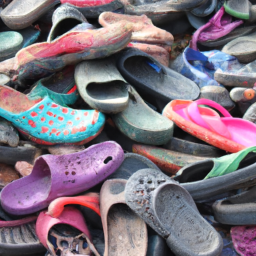Fashion Trends Through The Decades
So you think you’ve got style? Well, get ready to take a journey through time as we explore the ever-evolving world of fashion trends through the decades. From the flapper dresses of the roaring twenties to the grunge-inspired looks of the nineties, this article will be your ultimate guide to understanding how fashion has changed and evolved with each passing era. Get ready to be transported back in time and discover the iconic trends that have shaped the way we dress today.
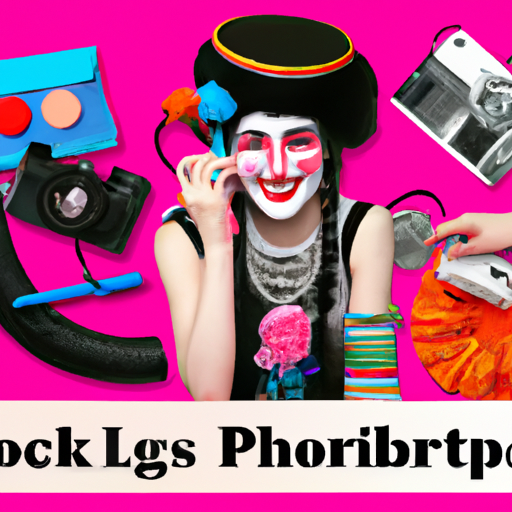
Table of Contents
1920s
Flapper Style
The 1920s, also known as the “Roaring Twenties,” was a decade of immense change and cultural revolution. One of the most iconic fashion trends that emerged during this time was the flapper style. The flapper style was a reflection of the newfound freedom and independence that women were experiencing. Flappers were known for their progressive attitudes, a rejection of traditional norms, and a desire for a more liberated lifestyle.
Flapper fashion was characterized by its loose and shapeless silhouette. Gone were the restrictive corsets and long hemlines of the previous era; instead, flapper dresses boasted dropped waistlines and shorter hemlines that fell just above the knee. These dresses were often adorned with fringe, sequins, and beading, creating a sense of movement and vibrancy.
Cloche Hats
To complement the flapper dresses, women in the 1920s favored cloche hats. The cloche hat was a close-fitting, bell-shaped hat that hugged the head, accentuating the short hairstyles that were in vogue at the time. These hats were typically made of felt or straw and often featured embellishments such as feathers, bows, or ribbons. The cloche hat became a symbol of sophistication and modernity, completing the overall flapper look.
Art Deco Influence
The 1920s were also heavily influenced by the art deco movement, which sought to incorporate bold geometric shapes, symmetrical patterns, and vibrant colors into design. This influence extended to fashion, with garments featuring intricate geometric patterns and bold color combinations. Art deco jewelry, characterized by its striking designs and use of precious materials, also gained popularity during this time. The art deco aesthetic perfectly encapsulated the progressive and glamorous spirit of the era.
1930s
Bias Cut Dresses
The fashion landscape of the 1930s witnessed a shift towards more refined and elegant styles. The most influential trend of the decade was the bias cut dress. This style involved cutting the fabric diagonally to create a clingy and body-skimming silhouette. Bias cut dresses accentuated the natural curves of a woman’s body while maintaining an air of sophistication. To enhance the draping effect, soft and fluid fabrics like silk, satin, and velvet were often used.
Wide-Leg Trousers
Another significant trend of the 1930s was the emergence of wide-leg trousers. Previously, women had primarily worn skirts and dresses, but as societal norms evolved, women began to embrace more practical and comfortable clothing options. Wide-leg trousers provided freedom of movement and a sense of empowerment. These trousers were typically high-waisted and elegantly tailored, further accentuating the feminine figure. Paired with a blouse tucked in or a cropped jacket, wide-leg trousers became a staple in women’s wardrobes.
Hollywood Glamour
As the film industry flourished during the 1930s, Hollywood became a major influence on fashion trends. The glamour and allure of the silver screen inspired women to adopt a more sophisticated and glamorous style. Long, flowing gowns made from luxurious fabrics like silk and chiffon became popular eveningwear choices. These gowns often featured intricate detailing, such as embroidery, beadwork, and drapey sleeves. To complete the Hollywood glamour look, women adorned themselves with statement jewelry, fur stoles, and elegant accessories.
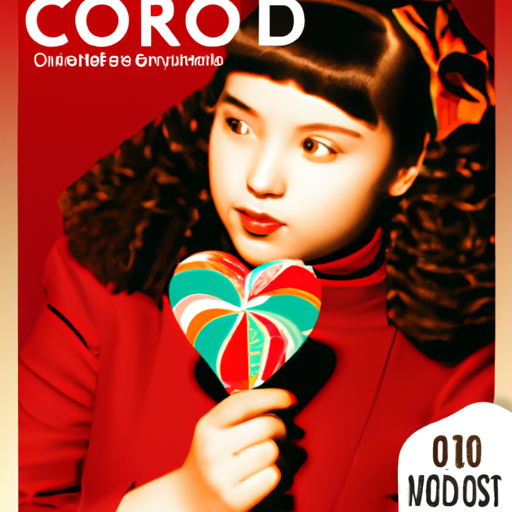
1940s
Military Influence
The 1940s were marked by World War II, which greatly influenced fashion trends of the time. Military-inspired clothing became prevalent as women took on new roles in the workforce to support the war effort. Women’s fashion adopted more practical elements, such as boxy jackets, tailored trousers, and utility jumpsuits. These garments were often inspired by military uniforms and featured shoulder epaulets, brass buttons, and structured silhouettes. The military influence in fashion not only reflected the changing social dynamics of the era but also symbolized strength and resilience.
Utility Clothing
The scarcity of resources during the war led to the rise of utility clothing in the 1940s. With rationing in place, designers had to find creative ways to make clothing both stylish and practical. Utility clothing focused on simplicity, practicality, and the efficient use of materials. It often featured streamlined silhouettes and minimal embellishments. The emphasis was on functionality, with details such as large patch pockets and adjustable waistbands. Utility dresses, skirts, and suits were common choices for women during this time as they provided versatility and ease of wear.
Victory Rolls
Hairstyles in the 1940s took inspiration from the military as well. Victory rolls, characterized by their voluminous, curled rolls of hair, became popular among women. Victory rolls were a symbol of strength and victory and were often worn to express support for the troops. This hairstyle required precision and skill, as it involved sectioning and curling the hair before shaping it into rolls. Whether worn with glamorous pin-up style dresses or with practical utility clothing, victory rolls added a touch of femininity and elegance to the overall look.
1950s
Full Skirts
The 1950s heralded a return to femininity and glamour after the austerity of the previous decade. One of the defining fashion trends of this era was the full skirt. Inspired by Christian Dior’s groundbreaking “New Look,” full skirts emphasized a tiny waist and a dramatically flared silhouette. These skirts were often made from layers of petticoats, creating volume and movement. Women delighted in the opportunity to wear vibrant, playful prints and colors, embracing a sense of joy and optimism that defined the post-war period.
Pencil Skirts
Counterbalancing the full skirts of the 1950s were pencil skirts, which became synonymous with sophistication and elegance. Pencil skirts were tailored to hug the curves of a woman’s body, creating a sleek and seductive silhouette. Women paired these skirts with form-fitting sweaters or tailored blouses for a chic office look or a night out. Pencil skirts not only exuded confidence but also represented a new level of maturity and professionalism for women in the workforce.
Rockabilly Style
The 1950s also witnessed the rise of rockabilly style, influenced by the fusion of rock ‘n’ roll and country music. This subculture embraced a rebellious and youthful spirit, and its fashion reflected that attitude. Rockabilly fashion drew inspiration from the past, particularly the 1940s, with women often opting for high-waisted jeans or skirts styled with a fitted top. Polka dots, gingham, and bold colors were common in rockabilly attire. Accessorizing with headscarves, cat-eye sunglasses, and statement jewelry completed the rockabilly look, creating a distinct and unforgettable style.
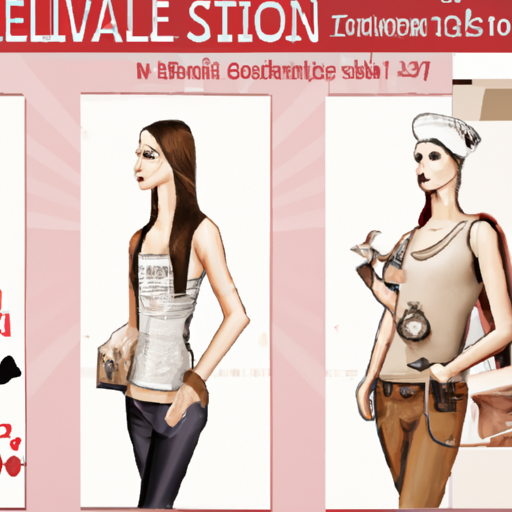
1960s
Mini Skirts
The 1960s were a decade of radical change and liberation, and no fashion trend encapsulated this spirit more than the mini skirt. British designer Mary Quant is often credited with popularizing the mini skirt, which revolutionized women’s fashion. Mini skirts became a symbol of liberation and female empowerment, rejecting the conservative dress standards of the past. These skirts were typically A-line or straight-cut and fell well above the knee, showcasing a bold flash of leg. The mini skirt became synonymous with youthfulness, rebellion, and the emerging feminist movement.
Mod Style
The mod style emerged in the 1960s as a response to the post-war conservatism and conformity. It was influenced by the modernist art movement and embraced the idea of futurism and progress. Mod fashion revolved around clean lines, geometric patterns, bold colors, and a sleek silhouette. Women embraced shift dresses, slim-fitting trousers, and matching two-piece suits. The mod look was completed with accessories like go-go boots, skinny scarves, and oversized sunglasses. This avant-garde fashion movement represented a break from tradition and a celebration of individuality.
Bell Bottoms
As the 1960s progressed, a counterculture movement took hold, and fashion trends began to reflect the spirit of rebellion and unconventional thinking. Bell bottoms, with their exaggerated flared legs, became emblematic of this era. Originally worn by sailors, bell bottoms became popular among both men and women. These pants were typically high-waisted and fitted through the hips before dramatically flaring out from the knee down. Paired with tie-dye t-shirts, fringe vests, and flowing blouses, bell bottoms represented a rejection of the mainstream and a desire for freedom and self-expression.
1970s
Disco Fashion
The 1970s is often associated with disco music, and the fashion trends of the era mirrored the glittering and glamorous world of the dancefloor. Disco fashion was all about decadence, shimmer, and daring styles. Women embraced form-fitting, slinky dresses made from fabrics like lurex and satin, complete with plunging necklines, open backs, and thigh-high slits. Sequins, metallics, and glossy fabrics were a staple in disco fashion, allowing women to shine and catch the light as they danced the night away.
Bohemian Style
Alongside the disco trend emerged the bohemian style, which celebrated a more laid-back and free-spirited aesthetic. Inspired by the counterculture movement and the hippie subculture, bohemian fashion embraced natural fabrics, folk-inspired prints, and loose-fitting silhouettes. Women wore flowing maxi dresses, peasant blouses, and oversized sweaters. Incorporating elements such as fringes, embroidery, and crochet added a touch of whimsy and individuality to the bohemian look. Accessorizing with beaded jewelry, floppy hats, and suede boots completed the Boho chic style.
Platform Shoes
Footwear in the 1970s reached new heights, both literally and figuratively, with the popularity of platform shoes. Platform shoes featured thick soles that added significant height, making them an essential part of both disco and bohemian fashion. Platforms came in various styles, including chunky heels, wedges, and sandals, and were often adorned with colorful patterns or metallic finishes. These shoes not only made a fashion statement but also provided comfort and stability, allowing women to dance the night away in style.
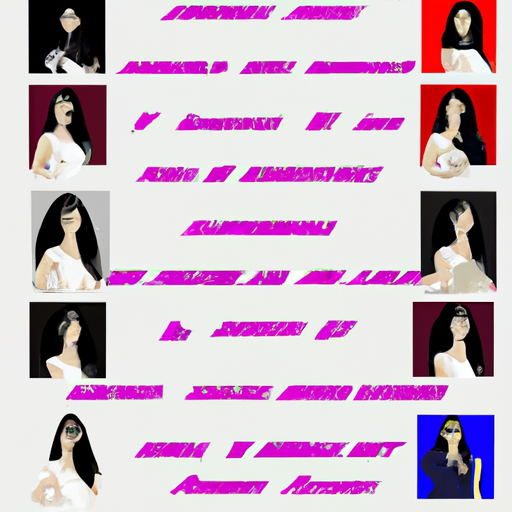
1980s
Power Dressing
The 1980s was characterized by an assertive and confident approach to fashion, known as power dressing. Power dressing aimed to convey authority and professionalism in the corporate world, as more women entered the workforce in managerial positions. Women embraced sharp, tailored suits with padded shoulders and strong silhouettes. These suits were often paired with bold accessories, such as oversized earrings and statement necklaces, to command attention. Power dressing challenged traditional gender norms and allowed women to assert their presence in the business realm.
Shoulder Pads
A defining feature of 1980s fashion was the prominence of shoulder pads. Shoulder pads were added to many garments, ranging from blazers to dresses, to create a broader and more structured shoulder line. This exaggerated silhouette was seen as a sign of strength and authority. Women in the 1980s sought to emulate the confident and powerful style of influential figures, including businesswomen, celebrities, and even fictional characters. Shoulder pads became a symbol of empowerment and a fashion statement that reflected the changing roles of women in society.
Neon Colors
The 1980s was an era that celebrated bold and vibrant colors, with neon hues taking center stage. Neon colors became a popular choice, creating eye-catching and daring looks. Whether it was a neon pink dress, a lime green blazer, or a bright yellow headband, women embraced these intense colors as a means of self-expression and embracing a more exciting and energetic lifestyle. Neon colors were often paired together or worn with contrasting black, creating a striking visual impact. This trend became synonymous with the ’80s and the culture of excess that defined the decade.
1990s
Grunge Fashion
The 1990s was a decade of rebellion and anti-establishment sentiment, which was reflected in the fashion trends of the time. Grunge fashion emerged as a direct response to the polished and glamorous styles of the previous decade. Influenced by the alternative music scene and subcultures like punk and indie, grunge fashion embraced a disheveled and nonchalant aesthetic. Women wore oversized flannel shirts, ripped jeans, and combat boots. Layering was key, with cardigans and knitwear worn over band t-shirts or baby doll dresses. The grunge fashion movement succinctly captured the spirit of individuality and non-conformity.
Crop Tops
Crop tops became a defining trend of the 1990s, championed by celebrities and showcased in popular culture. These tops, which exposed the midriff, were often worn with high-waisted jeans or skirts. Crop tops were a departure from the conservative styles of the past, offering a more playful and youthful alternative. This trend represented a shift towards body confidence and encouraged women to embrace their individuality. Whether adorned with bold prints, slogans, or embellishments, crop tops became a staple in every ’90s wardrobe.
Tracksuits
Casualwear in the 1990s saw the rise of tracksuits as fashion statements rather than just athletic attire. Tracksuits, made from comfortable materials like velour or nylon, became a symbol of effortless cool and laid-back style. Women embraced this trend by pairing matching tracksuit tops and bottoms in coordinating colors, often featuring prominent logos or brand names. The tracksuit trend blurred the lines between sportswear and fashion, introducing comfort and functionality into everyday wardrobes.
2000s
Low-Rise Jeans
The 2000s brought a shift in fashion focus, with the rise of low-rise jeans dominating the decade. Low-rise jeans, featuring a waistband that sat below the natural waistline, became a staple in every woman’s wardrobe. The aim was to showcase a more youthful and sultry look. Influenced by pop culture icons and celebrities like Britney Spears and Christina Aguilera, low-rise jeans were often paired with crop tops or adorned with embellished belts. This trend invited a more daring and revealing approach to denim.
Velour Tracksuits
The 2000s were also marked by the popularity of velour tracksuits, popularized by the likes of Juicy Couture. Velour tracksuits became a fashion statement and a symbol of luxury and leisure. These matching sets, often featuring zip-up jackets and drawstring pants, were favored by celebrities and trendsetters. The allure of the velour tracksuit lay in its comfort and versatility, as it could be dressed up with heels or worn casually with sneakers. This trend exemplified the increasingly casual and relaxed approach to fashion in the 2000s.
Emo Style
As subcultures continued to influence fashion, the emo style became a prominent trend in the 2000s. Emo fashion was characterized by a sense of melancholy and introspection, often expressed through dark and moody clothing choices. Women embraced skinny jeans, band t-shirts, and oversized hoodies. Dark colors, such as black, burgundy, and deep purple, took center stage, while accessories like studded belts and fishnet stockings added a rebellious edge. Emo style was a reflection of the emotional depth and self-expression that defined the youth culture of the time.
2010s
Normcore Trend
The 2010s saw a notable shift in fashion trends, with the rise of the normcore trend. Normcore embraced a deliberately unremarkable and low-key aesthetic, rejecting the pursuit of standing out and instead championing simplicity and functionality. Women opted for basic and understated pieces like plain t-shirts, jeans, hoodies, and sneakers. The aim was to blend in rather than stand out, emphasizing comfort and practicality over trends. Normcore challenged traditional notions of fashion and redefined what it means to be stylish.
Athleisure Wear
The influence of sports and fitness on fashion became increasingly evident in the 2010s with the rise of athleisure wear. The concept of blending athletic wear with everyday clothing gained popularity, allowing women to feel comfortable and fashionable simultaneously. Yoga pants, leggings, and sports bras became staple items in women’s wardrobes, paired with casual tops and outerwear. The athleisure trend reflected a more health-conscious society and emphasized the importance of being active and mindful of personal well-being.
Retro Revival
Nostalgia played a significant role in shaping fashion trends in the 2010s. Throughout the decade, there was a constant revival of past eras, with various decades serving as inspiration. Women embraced retro styles, such as high-waisted jeans, vintage dresses, and retro prints. The 2010s celebrated individualism and personal style, allowing women to mix and match elements from different eras and create unique looks. Retro influences added a touch of nostalgia to fashion and provided a sense of connection to the past.
From the flapper style of the 1920s to the normcore trend of the 2010s, fashion trends have continuously evolved and mirrored the changing social, cultural, and political landscapes of each decade. These trends serve as a visual timeline that reflects the transformative power of fashion and its ability to capture the spirit of the times. Whether embracing liberation, rebellion, or simplicity, women throughout history have used fashion as a means of self-expression and empowerment. The fashion trends of each decade are lasting testaments to the ever-evolving nature of style and its impact on society.
